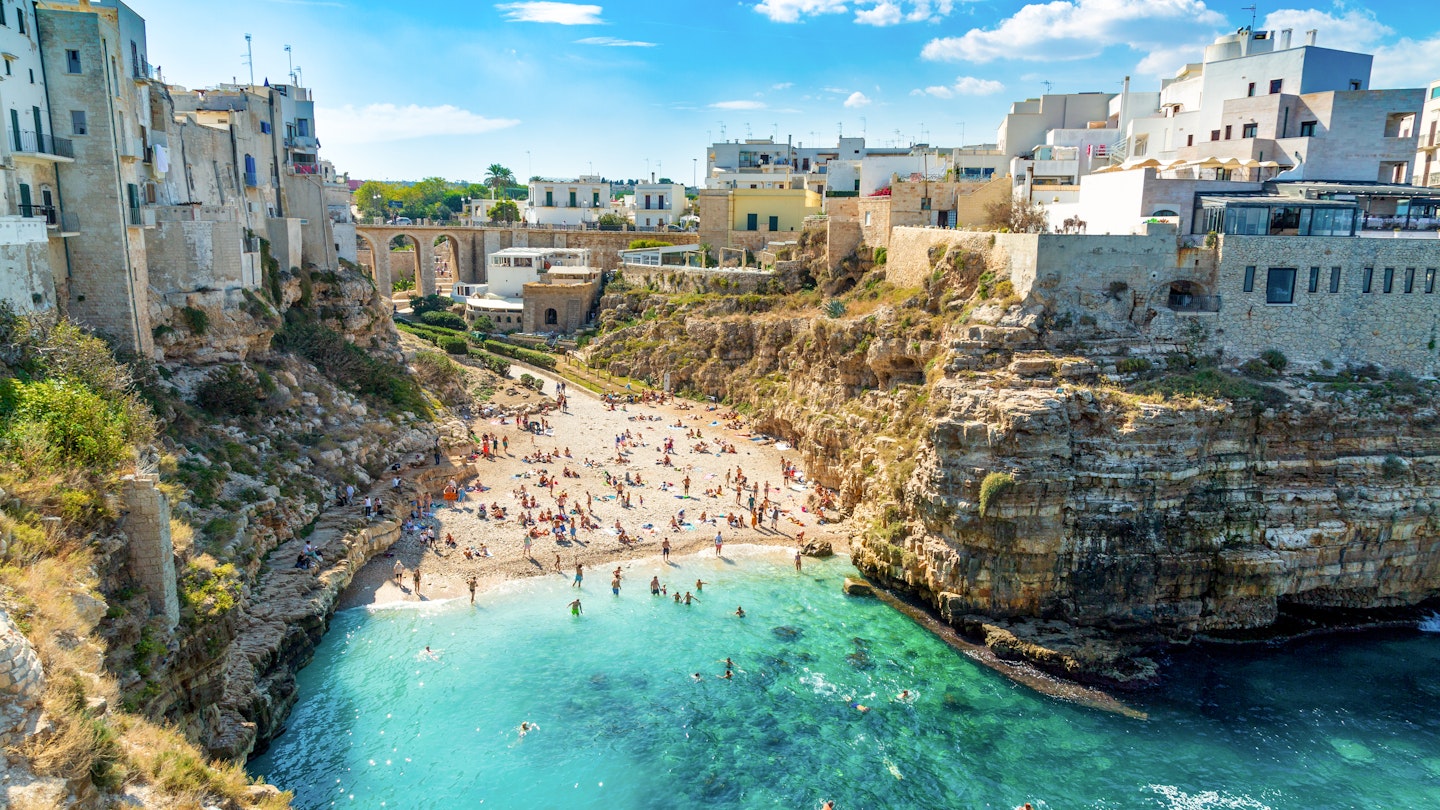Discover Puglia’s Hidden Gems with GoTravelDaily
It’s surprising to think that Puglia once played second fiddle to regions like Tuscany. This luminous southern part of Italy boasts adorable villages, unique architecture, and stunning beaches. From wild wooded promontories to charming baroque cities, the places highlighted in this guide should be on any “Must See” list for exploring Puglia.
1. Bari
Welcome to Bari, where the real Santa resides! The city’s iconic Basilica di San Nicola houses the relics of St. Nicholas, inspiring the legendary figure known for gift-giving. However, this lively port is rich in attractions beyond its Norman cathedral and ferry connections to various destinations.
- The labyrinthine old town, Bari Vecchia, presents a fantastic archaeological museum.
- Experience the legendary pasta-making artisans of Arco Basso who craft Puglia’s distinctive orecchiette daily.
- Savor local street foods such as focaccia barese and panzerotti during your exploration.

2. Promontorio del Gargano
The Gargano Promontory is a delightful mix of charming towns and stunning natural beauty. Vieste and Peschici are perfect bases, featuring bright streets adorned with colorful flowers and inviting trattorie. In summer, boat tours allow access to mesmerizing sea caves and hidden coves.
Moreover, these towns serve as access points to the breathtaking Tremiti Islands, known for hiking trails and crystal-clear waters. For adventurers, the Parco Nazionale del Gargano offers twisting paths through ancient woodlands and quaint mountain villages.
3. Polignano a Mare
In Polignano a Mare, cube-shaped buildings cling to the cliffs, offering breathtaking views of the azure Adriatic. This picturesque town attracts many visitors, especially for a swim in the famous Cala Porto beach. Fine dining enthusiasts can enjoy a meal at Grotta Palazzese, a stunning restaurant nestled in a cave.
To avoid the peak summer crowds, consider visiting in late spring or early autumn. Don’t miss out on tasting the local caffè speciale, a delightful combination of coffee, cream, and Amaretto.

4. Valle d’Itria
With its enchanting whitewashed towns and unique trulli, Valle d’Itria resembles a fairy tale. Alberobello stands out as a UNESCO World Heritage site, where visitors can learn about these unique homes firsthand. While many stay in Alberobello, consider exploring nearby towns like Ostuni and Cisternino, renowned for their culinary offerings.
Planning tip: The Festa della Valle d’Itria, a prestigious music festival, occurs in mid-July, providing a fantastic experience for attendees.
5. Grecìa Salentina
This region reflects the rich history of Greek influence in southern Italy. Comprising twelve charming towns, Grecìa Salentina is a cultural treasure trove where you might encounter Griko, a neo-Greek dialect. Focus your visit on towns like Corigliano d’Otranto, known for its impressive castle, and Melpignano, which hosts annual dance festivals.
Planning tip: Explore the Open Courtyards event in late July that showcases Martano’s beautiful private spaces.

6. Lecce
Lecce is often referred to as the “Florence of the South” due to its baroque architecture, known as barocco leccese. From the stunning Duomo to the Basilica di Santa Croce, the city showcases enthralling buildings that reflect its artistic heritage. In addition, uncover ancient history at various sites below the city surface.
7. Otranto
In the historical town of Otranto, remnants of its past are evident in the impressive cathedral with its captivating mosaic floor. The town’s rich history includes aspects from Greek, Roman, and Turkish cultures. Visitors can indulge in Otranto’s inviting beaches during summer, enjoying a mix of relaxation and exploration.
8. Gallipoli
Gallipoli embodies the essence of southern Italy, featuring stunning blue seas and an enchanting Old Town atmosphere. During the summer months, visitors flock to its beautiful beaches and vibrant nightlife. However, the town also offers a glimpse into history through landmarks like the Cattedrale di Sant’Agata.
Planning tip: Aim for a visit in June or September to enjoy everything Gallipoli has to offer without the peak-season crowds.





